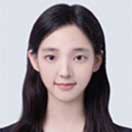Cocaine sharks found in Brazil spark concerns over ocean pollution

[A cruising reef shark checks out the people at the Cairns Aquarium, Australia, Photo Credit: Unsplash]
In an alarming discovery, researchers found significant levels of cocaine in Brazilian sharpnose sharks off the coast of Rio de Janeiro, exposing a troubling new facet of ocean pollution.
This finding highlights not only the well-documented issues of plastic and chemical contaminants but also the infiltration of illicit drugs into marine ecosystems.
A team from the Oswaldo Cruz Institute in Brazil conducted a study on 13 juvenile and young adult Brazilian sharpnose sharks (Rhizoprionodon lalandii) caught between September 2021 and August 2023.
The researchers discovered cocaine and its main metabolite, benzoylecgonine, in their muscle and liver tissues.
Alarmingly, the concentrations were startlingly high—up to 100 times greater than levels reported in other marine organisms.
All 13 sharks tested positive for cocaine, with benzoylecgonine present in all but one.
The implications of this contamination for the health of these sharks, already listed as vulnerable by the International Union for Conservation of Nature due to overfishing, are still unclear and require further study.
Brazil’s significant role in the global cocaine trade may explain how such high levels of the drug have entered the marine environment.
Cocaine can infiltrate waterways through untreated sewage, waste from illegal drug-refining labs, and discarded or lost drug packages from traffickers.
In coastal urban areas, like Rio de Janeiro, these sources significantly contribute to marine pollution.
Once in the water, cocaine is absorbed by smaller marine organisms, which are then consumed by larger predators, leading to bioaccumulation.
As a result higher-order consumers, such as sharks, end up with higher concentrations of the drug in their bodies.
While it is still unknown exactly how cocaine affects sharks, previous studies on other aquatic species suggest severe repercussions.
Zebrafish embryos exposed to cocaine exhibit lower cell viability and increased DNA fragmentation.
European eels exposed to environmental levels of cocaine show altered muscle physiology.
These findings suggest potential reproductive and predatory issues for sharks, possibly affecting their overall survival and behavior.
The researchers did not specifically analyze the health impacts on the sharks they studied.
However, based on existing knowledge, it is probable that the drug's presence could disrupt endocrine systems, impair hormone regulation, and increase susceptibility to disease.
These health concerns are particularly concerning given that Brazilian sharpnose sharks are already at risk due to overfishing.
The presence of cocaine in marine life is part of a broader issue of pharmaceutical pollution affecting global waterways.
This pollution includes a range of substances, from antibiotics and synthetic estrogens to recreational drugs.
A 2017 study found that water samples from Brazil’s Bay of Santos contained as much cocaine as caffeine, illustrating the severity of the problem.
Both drugs filter into the waterways through sewage after being excreted by consumers.
As a major cocaine exporter, Brazil's illegal refining facilities could also be contributing to its pollution problem, as could drug packages lost or discarded by traffickers within the nation's ports.
The study's authors emphasize the need for increased surveillance and awareness programs to address this emerging environmental issue.
They advocate for more comprehensive legal frameworks to monitor and reduce the presence of illicit drugs in marine ecosystems.
Additionally, future research is essential to better understand the extent of cocaine contamination and its effects on marine life.
This includes studying other shark species, estuary-dwelling rays, and migratory fish, as well as taking water samples from affected areas to provide a clearer picture of the contamination levels.
Controlling the release of cocaine and even legal medicines and drugs into the oceans presents significant challenges.
It is possible to treat wastewater so that these chemicals are not released into the water, but it is incredibly expensive.
Despite the cocaine’s mysterious origins and its still-murky effects on humans and animals, the findings serve as a wake-up call about the increasing danger of cocaine pollution.
External researchers note that the study’s sample size was small and that the team did not take water samples from the area where the fish were caught, further supporting the need for additional research.
The alarming discovery of cocaine in Brazilian sharpnose sharks off Rio de Janeiro’s coast underscores the growing and complex problem of ocean pollution.
It serves as a stark reminder that human activities, including the illegal drug trade, have far-reaching and often unforeseen impacts on the environment.
Combatting this issue will require coordinated efforts from scientists, policymakers, and conservationists to ensure the health and sustainability of marine ecosystems.
Implementing comprehensive, robust legal frameworks and proactive measures is essential to address and mitigate this emerging environmental threat.

- Jimin Youn / Grade 11
- Seoul Academy Upper Division

![THE HERALD STUDENT REPORTERS [US]](/assets/images/logo_student_us.png)
![THE HERALD STUDENT REPORTERS [Canada]](/assets/images/logo_student_ca.png)
